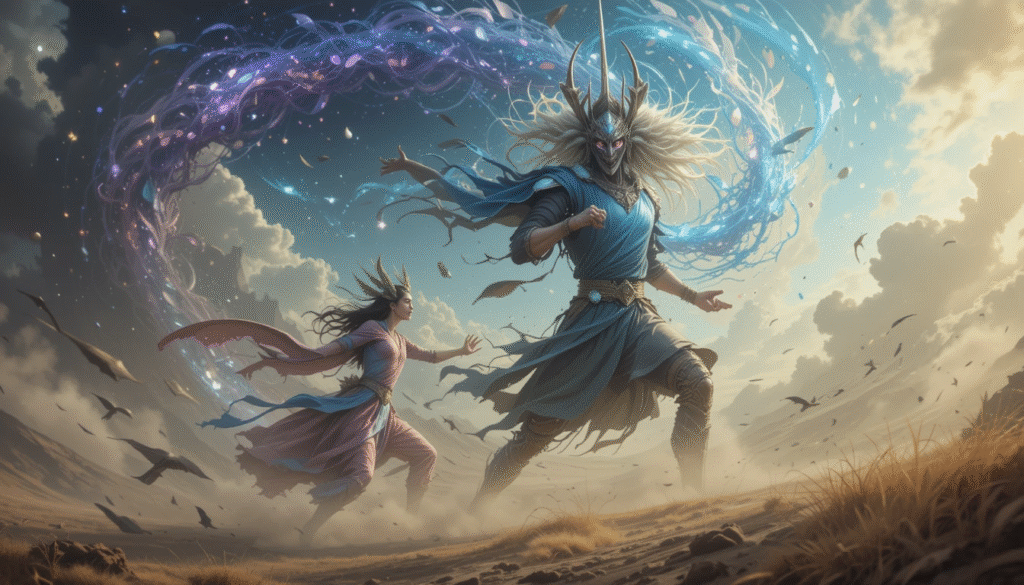All human beings, regardless of their environment, origins, or culture, experience an inevitable, sometimes inexplicable pull from within — an instinctual pull beyond habit and reason. That pull within is what some philosophers and psychologists have summarized with a word borrowed from Indic philosophy: antarvwsna.
While not a term used in everyday dictionaries, “antarvwsna” is a composite of two Sanskrit terms: antar (inward or internal) and vāsanā (desire, impression, or craving). It is an internal gentle but persistent force that influences behavior, feelings, and decisions, but sometimes without conscious awareness. In this article, we will explore the definition, application, and practical uses of antarv wsna.
The Meaning Behind Antarvwsna
In trying to fully grasp the idea, it is necessary to notice that antarvwsna is more profound than exterior desires. Whereas desires such as sleeping when one is tired or eating when one is hungry are physiological, antarv wsna is more to do with less apparent, unconscious inclinations. It could be the unexplainable urge to be an artist, the irresistible pull towards a spiritual practice, or the inner restlessness that compels one to go somewhere without knowing why.
Antarvwsna moves quietly. It doesn’t yell, but it always tugs. It’s the sense of “there’s more to life than this” or the quiet reflection that something inside you is still not satisfied.
Roots in Indian Philosophy
Indian philosophy, especially Vedanta and certain schools of Buddhism, has had difficulty historically with the theory of vāsanā—imprints left behind by past actions or experiences that remain dormant. These imprints, according to the theory, exist in the subconscious and manifest themselves as tendencies or urges in our current life.
Antarvwsna, then, as a variation on this theme, might be conceived of as the most intimate and abiding of these interior urges. It is not so much a lingering impression as a directive to undertow — an interior compass, if you will.
Antarvwsna vs. Modern Psychology
Ironically, antarvwsna theory is not as far from the mark as one might guess from modern psychology theories. Carl Jung’s collective unconscious and archetypes, or the id of Freud, are comparable to the way antarv wsna operates. It originates from within, typically without our conscious intention, and affects our thought and behavior.
Self-knowledge of what moves one most deeply is the path to healing in psychotherapy. Self-knowledge of one’s antarvwsna may be the path to a more honest life.
How Antarvwsna Manifests in Life
Antarvwsna is not always dramatic. It may be present in a subtle form:
- Restlessness in a well-paying job with no discernable issues.
- Recurring dreams or visions that do not fit but are somehow significant.
- Unusual fascination with a particular culture, community, or locations.
- Emotional passion for some causes or beliefs, yet being unsure why.
These are not random idiosyncrasies, they may be your antarv wsna calling.
Listening to Antarvwsna

Everyone suppresses their own aspirations due to pressures from society, fear of failure, or ignorance. But those who decide to listen — artists, mystics, inventors, entrepreneurs — will discover more meaningful purposes in life.
Listening isn’t acting on impulse. Listening is stopping to be still, write in a journal, or meditate. Antarv wsna is revealed when the mind is still.
Some of the ways of reaching it:
- Daily Reflection: Take 10 minutes a day to reflect on what gets you pumped or really unsettles you.
- Dream Journaling: Write down your dreams; symbols typically have hidden meanings.
- Creative Expression: Engage in free writing, drawing, or any process where rational thinking is not involved.
- Mindful Conversations: Speak with those who will not judge you, and allow your innermost thoughts to come out.
- Nature Immersion: Being in nature generally resolves internal confusion and uncovers truths hidden within.
Antarvwsna and Decision Making
Decision-making is one of the practical applications of tuning into antarvwsna. Human beings make decisions regarding their lives according to reason, advice, or peer pressure — and find themselves unhappily later. The use of antarv wsna in decision-making makes decisions more in harmony with one’s true self.
For example, choosing a profession not for the fact that it is lucrative, but rather for the fact that it resonates greatly with your inner desire, can lead to success and fulfillment. It helps you distinguish between what you feel you require and what your very soul longs for.
Pitfalls of Misreading Antarvwsna
In fact, all powerful desires are not based on antarvwsna. Some may be the product of trauma, conditioning, or transitory fashions. The criterion is discernment and introspection. Antarv wsna is stable, long-standing, and significant — as opposed to compulsive impulses.
Antarvwsna and Spiritual Growth
For the spiritual seeker, antarvwsna may meet them at the crossroads. All of us spiritual seekers share a recurring, unexplainable inner prompting — a craving for truth, for peace, or for reunification with the divine. That is antarv wsna in its highest form. It’s the summons to transcendence, to knowing who we are beyond name and form.
Final Thoughts
Antarvwsna isn’t a term we hear daily, but it’s one we all go through. You might be a student, entrepreneur, artist, or just someone attempting to make sense of life, but tuning into your antarvwsna will allow you to live life more authentically.
It’s not about denying the world, but making sure that your external behavior reflects your internal truths. Respect for antarv wsna benefits you, but also adds to the world something the world needs that only you can provide.
Frequently Asked Questions (FAQs)
Q1. Is antarvwsna the same as intuition?
No, although they are similar. Intuition is usually a momentary flash of insight, whereas antarv wsna is a deeper, abiding inner longing or craving that develops over a span of time.
Q2. How do I differentiate antarvwsna and transitory desires?
Antarvwsna is rational and persistent for a long duration, whereas fleeting desires are episodic and emotional.
Q3. Can antarvwsna evolve with time?
Yes. As you mature and change, what you have within you could change. But some underlying messages might come back around in your lifetime.
Q4. Is antarvwsna possible in today’s world?
It is. Even if it is not necessarily on the so-called traditional paths, integrating it in a considered manner is part of a wonderfully fulfilling and successful existence.
Q5. How do I know that I’m actually keeping my antarvwsna?
You will feel a balance, harmony, and a satisfying interaction with life, even in times of challenge. There is less internal struggle and more clarity.
Stay in touch to get more information on KalidCan ! Thank you.
